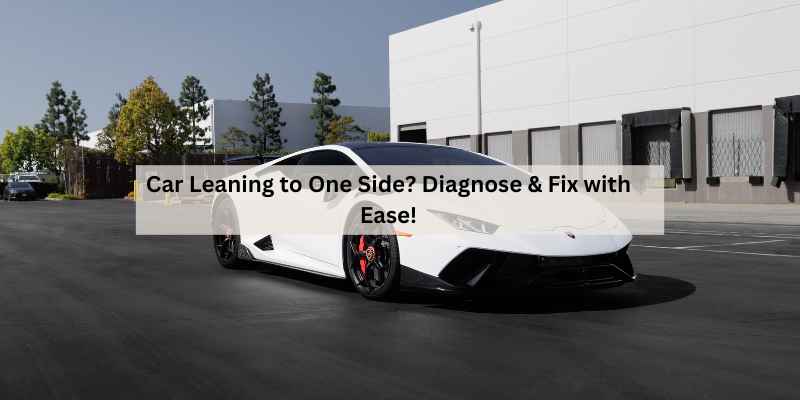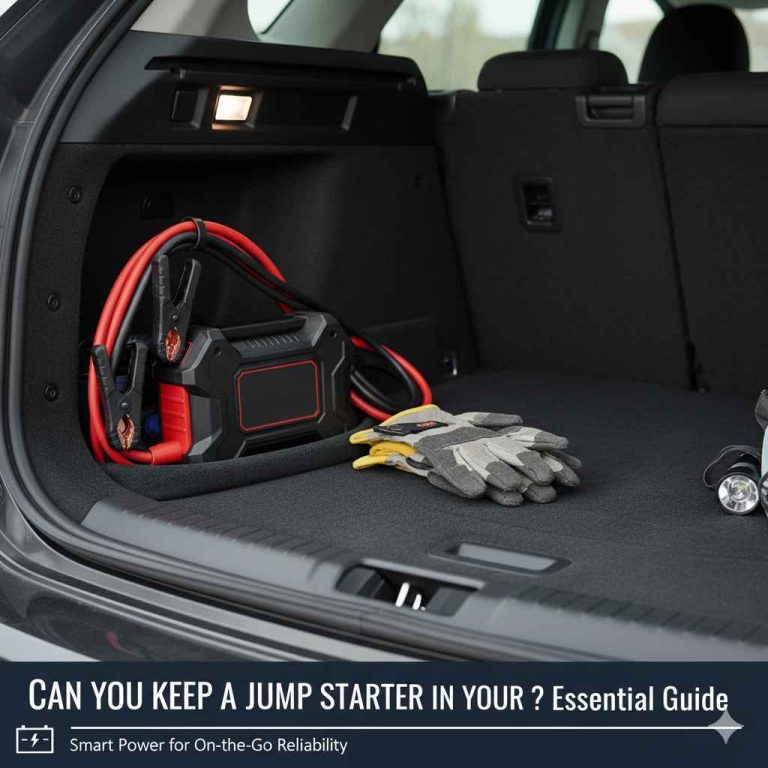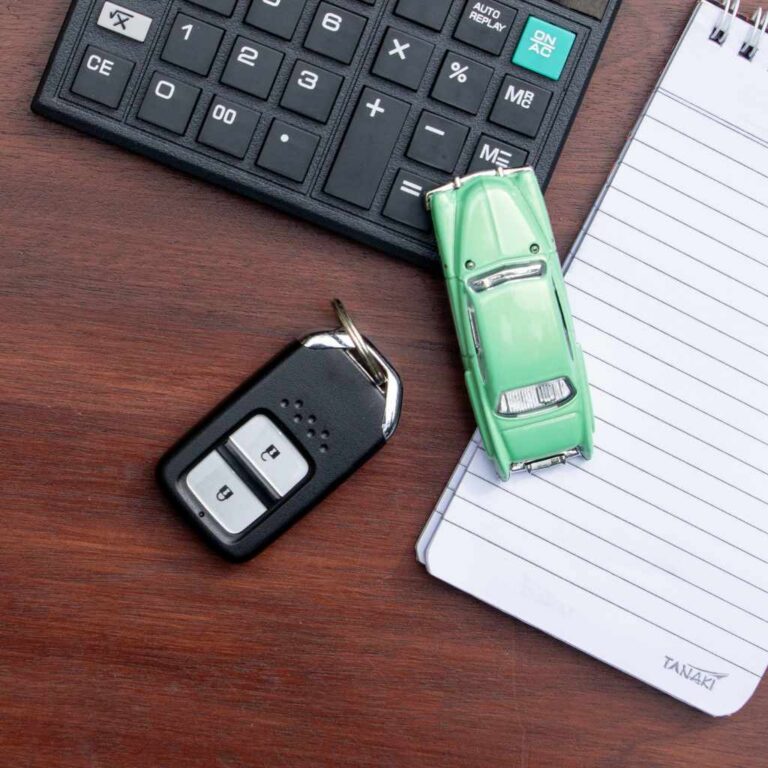Car Leaning to One Side? Diagnose & Fix with Ease!
A car leaning to one side often indicates issues with the suspension system or uneven weight distribution. It may also point to a flat tire or misalignment.
A car that leans to one side can be both alarming and dangerous. This issue often arises from worn-out suspension components, which can lead to uneven weight distribution. Ignoring this problem can worsen handling and stability, increasing the risk of accidents.
Drivers should regularly inspect their vehicles to ensure all parts function correctly. Flat tires can also contribute to the problem, so checking tire pressure and condition is essential. Proper maintenance and timely repairs can prevent further complications. If you notice your car leaning, addressing the issue promptly will enhance safety and performance on the road.
Signs Your Car Is Leaning
Visual cues are easy to spot. Look for your car leaning to one side. Check if the tires wear unevenly. This can show a problem with the suspension.
Handling differences can affect your driving experience. A leaning car may feel unstable. You might notice it pulls to one side while driving. This can make steering hard and unsafe.
Pay attention to any unusual noises. Sounds like clunks or bangs can signal issues. Check if the car bounces too much when hitting bumps. This can mean the suspension is not working right.
Common Causes Behind The Lean
A car leaning to one side can be caused by worn out springs. Springs support the weight of the car. If they wear down, the car may tilt.
Another reason is damaged struts or shock absorbers. These parts help control the car’s movement. If they are damaged, the car can lean.
Uneven tire pressure is also a common cause. Tires need the right amount of air. If one tire has less air, it can make the car lean.
Checking Tire Pressure
Measuring tire pressure is easy and quick. Start by getting a tire pressure gauge. Remove the valve cap from one tire. Press the gauge firmly onto the valve. Read the number shown on the gauge.
Compare this number to the recommended pressure in your vehicle’s manual. Adjust the pressure if needed. Use an air compressor to add air. Release air by pressing the valve if the tire is overinflated.
Check each tire regularly. Proper tire pressure keeps your car safe and stable. It also helps improve fuel efficiency.
Inspecting Suspension Components
Check your car’s suspension components for signs of wear and tear. Look for broken parts or leaks in shocks and struts. Worn-out bushings can also cause issues. Tires may show uneven wear due to suspension problems.
Pay attention to any unusual noises while driving. A clunking sound often indicates a problem. Vibrations in the steering wheel can also signal suspension issues. Examine the alignment of your tires for any misalignment.
Seek professional help if you notice any serious problems. Mechanics can accurately diagnose suspension issues. They have the tools and knowledge to fix your car safely.
The Role Of Wheel Alignment
Wheel alignment plays a vital role in your car’s posture. Proper alignment keeps your vehicle’s wheels parallel. Misalignment can cause your car to lean to one side.
When wheels are not aligned, it affects tire wear. Tires may wear unevenly and lead to safety issues. Regular alignment checks can prevent these problems.
Alignment correction involves adjusting the angles of the wheels. This process ensures your car drives straight. A well-aligned car improves handling and fuel efficiency.
| Impact of Misalignment | Effects |
|---|---|
| Tire Wear | Uneven wear leads to early tire replacement. |
| Handling | Poor handling increases risk of accidents. |
| Fuel Efficiency | Misalignment can reduce fuel economy. |
Diy Fixes For Minor Issues
Check tire pressure regularly. Low pressure can cause your car to lean. Use a pressure gauge for accuracy. Inflate tires to the recommended PSI. This simple step can improve handling.
For suspension checks, look at your shocks and struts. Inspect for leaks or damage. A worn-out suspension can lead to uneven weight distribution. Replace any faulty parts promptly to ensure safety.
When To Visit A Mechanic
Cars that lean to one side often indicate complex suspension problems. Check for worn-out shocks or struts. These parts help keep your car steady. If they fail, your car tilts.
Safety concerns arise when your car leans. A tilted car can affect handling. This can lead to accidents. Regular checks can prevent serious issues.
Warranty issues may occur with suspension repairs. Many warranties cover suspension parts. Always check your warranty details before repairs. This helps avoid unexpected costs.
Maintaining Your Car To Prevent Leaning
Regular checks on your car can prevent leaning issues. Inspect tires for wear patterns. Uneven tire wear can indicate problems. Shock absorbers should be checked frequently. Worn shocks can cause leaning over time.
Keep an eye on your suspension system. A damaged part can lead to imbalance. Make sure to monitor brake systems as well. Uneven braking can affect your car’s alignment.
Check the alignment of your wheels every few months. Misalignment may cause your car to lean. Regular maintenance helps to keep everything in working order.
| Component | Check Frequency | Signs of Issues |
|---|---|---|
| Tires | Monthly | Uneven wear |
| Shock Absorbers | Every 6 months | Leaking fluid |
| Suspension | Annually | Noises or bouncing |
| Alignment | Every 6 months | Pulling to one side |
Frequently Asked Questions
What Can Cause A Car To Lean To One Side?
A car can lean to one side due to uneven tire pressure, damaged suspension components, or worn-out springs. Other causes include heavy loads on one side or misaligned wheels. Regular maintenance and inspections help prevent these issues.
Why Does My Car Keep Leaning To The Left?
Your car may lean to the left due to uneven tire pressure, misaligned wheels, or worn suspension components. Inspect tires for damage and ensure proper inflation. A professional alignment can correct any wheel issues. Regular maintenance helps prevent these problems and ensures safe driving.
Why Does My Car Lean To One Side When Parked?
A car leans to one side when parked due to uneven weight distribution or a flat tire. Worn suspension components can also cause this issue. Regularly check tire pressure and suspension parts to maintain proper balance and stability. Address any underlying issues to avoid further problems.
How Do I Fix My Car From Pulling To One Side?
To fix your car pulling to one side, check tire pressure and ensure it’s even. Inspect wheel alignment and adjust if necessary. Examine suspension components for wear. Rotate tires to promote even wear. If issues persist, consult a mechanic for a thorough inspection.
Conclusion
A car leaning to one side can signal various issues. Ignoring this problem may lead to safety risks and costly repairs. Regular inspections and maintenance are essential. Addressing alignment, suspension, or tire problems promptly ensures a smooth ride. Stay proactive to keep your vehicle in top shape and maintain your peace of mind.







